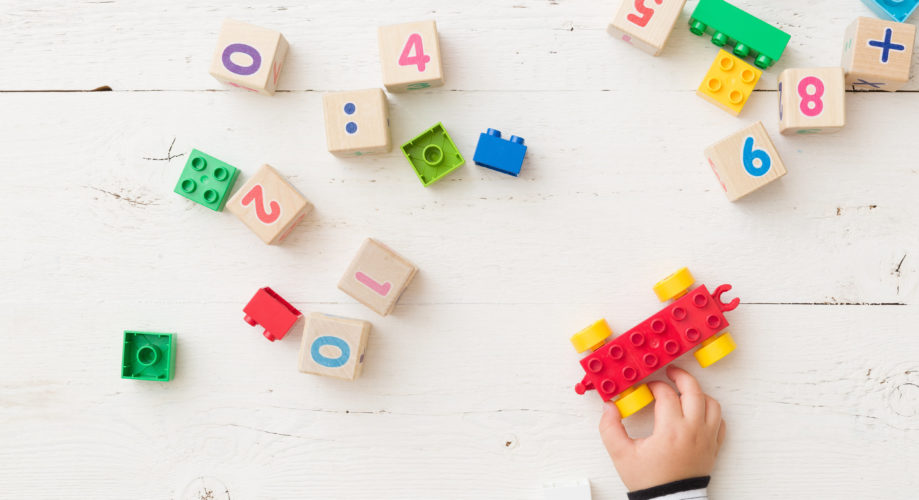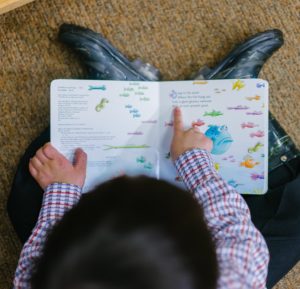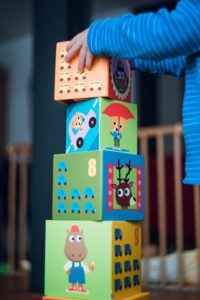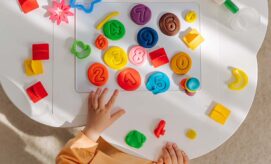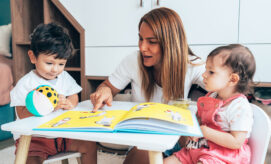Sorting: Many centers and classrooms have small loose parts available that can be easily used for a variety of activities. When children sort these items, they are learning important mathematical skills in pattern-matching, categorizing, and number correspondence, all of which are foundational for algebra and other concepts learned later in school. Sorting can be done with buttons, animals, small blocks, colored popsicle sticks, pom-poms, or any other loose parts that you have available!
Stacking and building with blocks: Does your program have blocks handy? These could be foam blocks, wooden blocks, or even legos! When children build, they are noticing the different shapes and sizes of each block. They are learning which size will best support their tower and how to build a strong foundation to support their building. All of these activities introduce children to geometry and mathematical reasoning.
Mystery bag: Learning about shapes can be a tricky concept for young children to grasp. To help children gain a better understanding, you might consider trying a mystery bag! To make one, place a variety of different shaped blocks into a bag, and encourage children to reach in and guess what shape it is before they look at it or take it out. From this activity, children will learn to feel the shape, and learn to differentiate by corners or sides. Encourage children to talk about what they are feeling, so their other classmates can join in on the learning.
Simon Says: Did you know that Simon Says can actually be an educational game? Children will learn spatial relationships between objects by figuring out how to place hands “on top of” or “behind” their head or putting their left foot “in front of” their right. An understanding of spatial relationships and positions of objects helps children to develop a foundational understanding of geometric concepts.
Reading books: While there are many early math books available that explore shapes and counting, children can learn about early math skills from almost any book! By simply looking at a book’s illustrations and asking children questions like “how many fish do you see on this page?” children can learn math skills anytime! Simply include early math concepts like counting, size comparisons and shapes into the dialogue you use to engage children in the story.
Articulating Learning to Families
An important point that was emphasized at the event was articulating the specific learning goals to parents. While parents can observe their children playing, they might not understand the specific learning that is happening, and how the specific materials you’ve selected are contributing to the learning process. To ensure that parents understand learning, it is important to communicate what the children are working on in the classroom.
This can be done with a poster, or by sharing a few photos (via email or a parent communication app) with a brief description of the math foundations that children are learning through their play. Or you might even write a small note to post by the sign-in, sign-out sheets that with a message like “Today we played a game to learn about shapes and geometry!”
Parents are always eager to know more about what children are learning at school! When they better understand what is happening in the classroom, they are able to help reinforce learning in conversations and activities at home.


